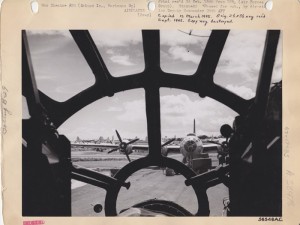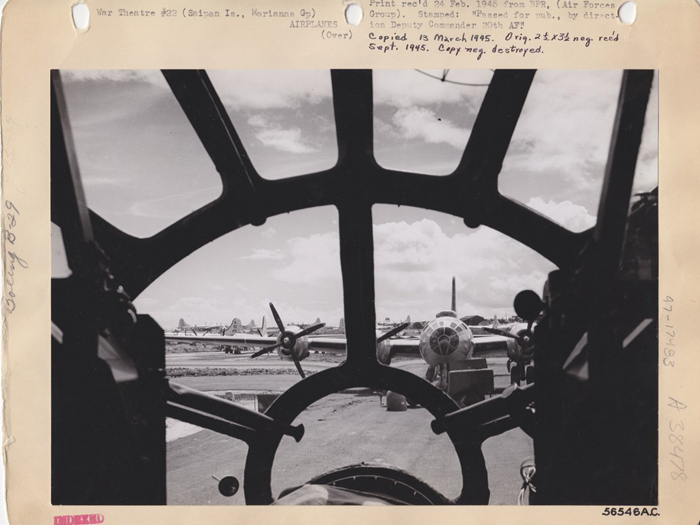
This photo, labeled War Theatre #22, Saipan Island, February 24, 1945, is one of many digital assets found on a new Website that examines air raids on Japan during World War II.
According to its home page, Japanairraids.org is “an ongoing project to build a digital archive dedicated to the international dissemination of information about the World War II air raids against Japan.”
The site’s creators, Cary Karacas, Assistant Professor of Political Science, Economics, and Philosophy at the College of Staten Island and Bret Fisk, a writer and translator living in Japan, have compiled an impressive collection of official records and first-hand accounts of the air raids.
Professor Karacas obtained many of the primary English-language documents, videos, and sound recordings from the U.S. National Archives in College Park, MD and the Library of Congress in Washington, DC. Fisk has collected most of the Japanese-language documents and is conducting interviews with air raid survivors.
The bilingual Website offers an array of archived reports and footage in both English and Japanese. It contains aerial photos of cities before and after bombing raids as well as photos from the cockpits of the bombers themselves. It also contains first-hand accounts of the people affected by the air raids.
The concept emerged from a 2009 research trip to Japan where Professor Karacas attended a meeting of the Society to Record Air Raids on Japan, which has met annually since 1970. “At the meeting, I was struck by the fact that in the group’s 39-year existence, I was the first-non-Japanese to attend,” said Karacas. “I concluded that the creation of a bilingual digital database would be the best way to disseminate information about the raids and encourage others to research…topics related to the destruction of urban Japan.”
The archived reports include air intelligence reports that detail the planning of incendiary raids.” The striking “Survivor Accounts” section contains published materials that chronicle survivors’ experiences during the air raids. Some of the more haunting pieces involve Japanese citizens watching as their loved ones are struck by incendiary bombs or one account of a witness watching children tossing an unexploded bomb to each other seconds before it went off. The photos include pictures of Hiroshima and Nagasaki after the atomic bombs struck, as well as a photograph of a giant mushroom cloud hovering ominously over one of the cities.
Newsreels and propaganda films round out the Website’s archives along with “The Fighting AAF” radio broadcasts.
Since late November, the site has attracted nearly 100,000 unique visitors, all of whom are also invited to submit any materials they may have to help build the site’s archives so that they may reach people who do not possess the “time and resources to visit the physical archives” in Maryland. Karakas and Fisk have compiled a growing menagerie of archival reports, footage, and photographs that aims to be more than a sum of its parts.
Karakas said that he hopes that “the Website will encourage researchers to examine a multitude of topics related to the wartime reorganization of neighborhoods and cities under ever-changing civil defense policies,”
For more information about the site, visit www.japanairraids.org.

















